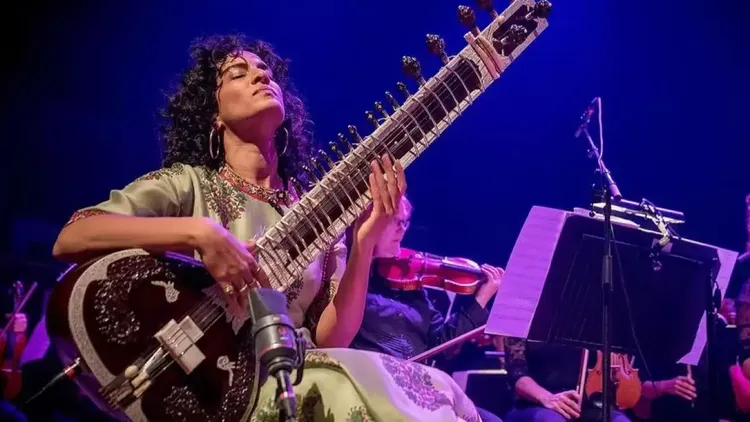For smooth Ad free experience
For smooth Ad free experience
As India awoke to new life and freedom, Hindustani music has also opened up to a myriad different art forms and their proponents. Interactions of Hindustani music with art around the world has resulted in some wonderful new creations

Story of Hindustani Classical Music
One of Allauddin Khan’s students, Ravi Shankar, began interacting with other artists and musicians from a young age. In the 1950s, Shankar composed the music for Satyajit Ray’s Apu Trilogy. A little over a decade after that, Shankar came in contact with George Harrison, a member of the British boy band, The Beatles. Harrison’s friendship with Shankar resulted in the sitar being incorporated in some of the later songs of the English band, and two albums where Harrison would collaborate with Shankar as a solo artist. This laid the foundation of a genre of fusion music, where Hindustani classical musicians collaborate with musicians from other styles and regions to create new, unexplored forms of music.
On the heels of Shankar’s collaboration with Harrison and the Beatles, the English Guitarist John McLaughlin collaborated with tabla-player Zakir Hussain, violinist L. Shankar, and ghatam player T. H. Vikku Vinayakram to form Shakti, a fusion instrumental band that mixed the genres of Hindustani classical music, Carnatic music, and expressions of jazz. In the 1990s, McLaughlin and Hussain formed another band together, alongside some new collaborators, by the name of Remember Shakti. Elsewhere, Pakistani Qawwali singer Nusrat Fateh Ali Khan sang an alaap for Martin Scorsese’s The Last Temptation of Christ in 1988, and this followed with more collaborations between Khan and Western artists, including Peter Gabriel, Michael Brook, and Eddie Vedder. The American guitarist and singer-songwriter Jeff Buckley counted Khan as one of his biggest inspirations.
While these acts of fusion were creating ripples in the Western world, audiences in India, Pakistan, and Bangladesh were still closed off to fusion experiments, In these nations, Hindustani classical music and its lighter genres such as ghazals and thumris have only recently experienced widespread mainstream popularity. While Hindustani music did feature in Hindi, Bengali, and Urdu cinema from time to time, these songs were often played for comic relief within the narrative of the films or were set in older periods, which meant that the sound hadn’t updated itself to the tastes of a global audience. The positive use of classical elements such as the alaap or taan in pop film songs is a very recent phenomenon, but one that has increasingly become popular.
Additionally, in the new millennium, with projects such as Coke Studio, artists like Ali Sethi, and bands and ensembles such as Advaita and the Anirudh Varma Collective, Hindustani music has received a new impetus among young listeners. Globally, the likes of diaspora South Asian artists such as Anoushka Shankar and Arooj Aftab gaining recognition on the international stage has also been a big boost to classical music traditions. These acts are all pushing the boundaries of classical music in their way, with varied interpretations of what Hindustani music could entail.
With the growing newfound popularity of fusion classical music, there has also been a renewed interest in listening to classical music in a more traditional setup, which was missing earlier, especially among the youth. There are now YouTube channels with hundreds of thousands of subscribers which regularly upload videos of traditional Hindustani music baithaks, with some videos clocking many million views.
It remains to be seen what the future holds for Hindustani classical music, but the space currently is teeming with excitement, as artists and audiences continue to push their boundaries and experiment with different sounds.
0
You might be interested in reading more from
